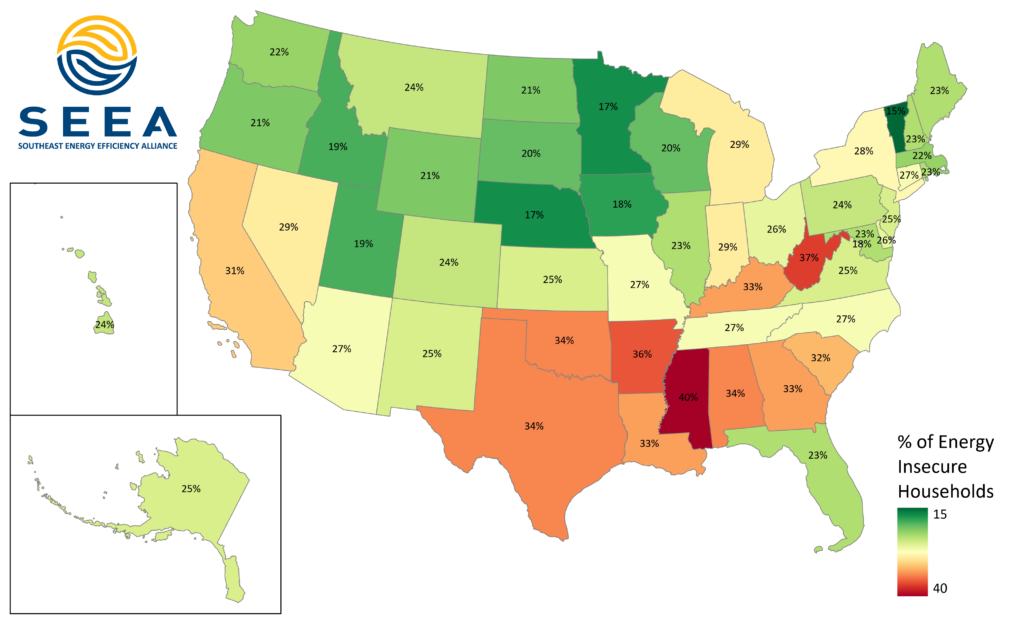Month: January 2023
Map of the Month – January
William D. Bryan, Ph.D. & Joy Ward
We are excited to introduce a new addition to SEEA’s blog this year – the Map of the Month. Every month, our research team will share a map that explores energy efficiency in the Southeast.

Map: Southeast Energy Efficiency Alliance.
Millions of people in the South who struggle to pay their electric and gas bills every month are threatened with energy insecurity, or when a household cannot maintain vital energy services like heating and cooling. Energy insecurity undermines the health, safety and affordability of housing. The COVID-19 pandemic has only exacerbated this crisis.
Using new state-level data from the Energy Information Administration’s 2020 Residential Energy Consumption Survey (RECS), this map shows that people living in the Southeast experience the highest rate of energy insecurity in the country. In Mississippi, where 2 out of 5 households struggle to keep on the lights and heat, people are more likely to be energy insecure than anywhere else in the U.S. Of the 9.3 million energy insecure homes in the Southeast, nearly one-third are in Florida and Georgia. People experiencing energy insecurity are at greater risk for respiratory illness, poverty, and being unable to survive or recover in the face of extreme weather.
Beginning with a report and StoryMap, published in 2021, our research team has led SEEA’s work in identifying the historical and current systemic issues that contribute to energy insecurity in the Southeast. In 2022, SEEA announced the Southeast Energy Insecurity Project and continues to advance energy efficiency as a mitigation tool to help people in the Southeast live in healthier, more comfortable homes. You can hear more about how to reduce energy insecurity in our upcoming webinar, Promoting Knowledge and Engagement – Addressing Energy Insecurity in the Gullah Community on Wednesday, Jan. 25 at 11 a.m. ET.


